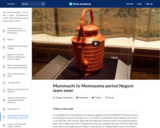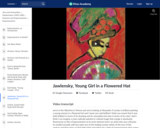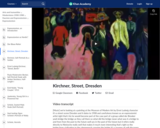
Sal shows examples of intersection and union of sets and introduces some set notation.
- Subject:
- Mathematics
- Statistics and Probability
- Material Type:
- Lesson
- Provider:
- Khan Academy
- Author:
- Salman Khan
- Date Added:
- 07/07/2021

Sal shows examples of intersection and union of sets and introduces some set notation.

This 11-minute video lesson introduces conic sections.

Introduction to experiment design. Creating a hypothesis. Double-blind testing. Placebo effect.

Introduction to experiment design. Explanatory and response variables. Control and treatment groups.

Significant figures are the number of digits in a value, often a measurement, that contribute to the degree of accuracy of the value. We start counting significant figures at the first non-zero digit. Calculate the number of significant figures for an assortment of numbers.

We've learned about matrix addition, matrix subtraction, matrix multiplication. So you might be wondering, is there the equivalent of matrix division? And before we get into that, let me introduce some concepts to you. And then we'll see that there is something that maybe isn't exactly division, but it's analogous to it.

Sal introduces the famous and super important Pythagorean theorem! This lesson includes an introduction video followed by examples and practice problems involving finding the hypotenuse, finding a side, finding area of an isosceles triangle, and determining if a triangle is a right triangle. It is followed by a unit on Pythagorean theorem applications.

This art history video discussion looks at the reconstruction of the "Ishtar Gate and Processional Way", Babylon, c. 575 B.C.E., glazed mud brick (Pergamon Museum, Berlin).

Sal checks whether the commutative property applies for matrix multiplication. In other words, he checks whether for any two matrices A and B, A*B=B*A (the answer is NO, by the way). Created by Sal Khan.

This essay looks at Italian Futurism. It includes a short video featuring a work by 19th-century scientist and photographer Étienne-Jules Marey, whose chronophotographic (time-based) studies depicted the mechanics of animal and human movement.

This art history video discussion looks at a Byzantine panel with archangel, Ivory leaf from diptych, c. 525-50, 16.8 x 5.6 x 0.35 in. (42.8 x 14.3 x 0.9 cm), probably from Constantinople (modern Istanbul, Turkey), (British Museum, London).

This art history video discussion looks at Jackie Winsor's "#1 Rope", 1976, wood and hemp, 40-1/4 x 40 x 40 inches (SFMOMA, San Francisco).

This art history video discussion looks at a Japanese Negoro ware ewer, Negoro workshop, Muromachi period (1392--1573) to Momoyama period (1573--1615) second half of 16th century, lacquered wood, Wakayama prefecture, Japan (Portland Art Museum).

This art history video dicussion examines Jasper Johns' "Flag", 1954-55, encaustic, oil and collage mounted on plywood, three panels, (MoMA).

This art history video discussion looks at Alexej von Jawlensky's "Young Girl in a Flowered Hat", 1910, oil on cardboard (Albertina, Vienna).

This art history video discussion looks at John Roddam Spencer Stanhope's "Thoughts of the Past" exhibited 1859, oil on canvas (Tate Britain, London).

This art history video discussion examines Joseph Beuys' "Table with Accumulator (Tisch mit Aggregat)", 1958-85, Tate Modern, London.

In this art history video discussion Dr. Beth Harris and Dr. Steven Zucker consider Fernand Khnopff's "I Lock the Door Upon Myself," 1891. Neue Pinakothek, Munich.
They disucss the Symbolist painters and a poem by Christina Rosetti.

This art history video discussion examines Ernst Ludwig Kirchner's "Street", Dresden, oil on canvas, 1908 (MoMA).

This art history video discussion looks at Paul Klee's "Twittering Machine (Die Zwitscher-Maschine)", 1922, watercolor, ink, and gouache on paper (MoMA).